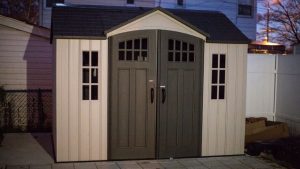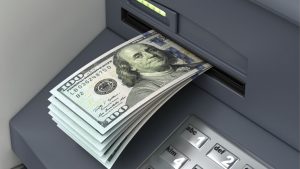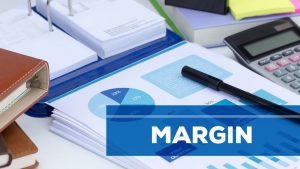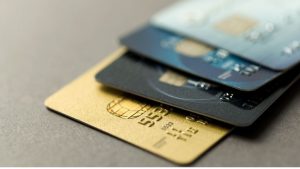Most people view debt in a negative light. But the prudent use of debt to buy income-producing assets is a proven path toward building wealth. I used this basic principle to dramatically grow my net worth in a fairly short span of time.
In this article, we will cover how to use debt to create passive income. We will discuss in detail 6 ways you can do this. Here’s a preview of what we’ll cover.
6 ways you can use debt to build passive income streams:
- Buy Rental Properties with Financing
- Use Debt to Buy Alternative Cash-Flowing Assets
- Use Debt to Finance Passive Income Businesses
- Buy Dividend Stocks or Bonds on Margin
- Cashback Credit Cards
- Peer-to-Peer Lending
That’s a lot to cover, so let’s get into it!
This post may contain affiliate links. If you click on a link and complete a transaction, I may make a small commission at no extra cost to you.
The information contained in this post is for informational purposes only. It is not a recommendation to buy or invest, and it is not financial, investment, legal, or tax advice. You should seek the advice of a qualified professional before making any investment or other decisions relating to the topics covered by this article.
Buy Rental Properties with Financing

This strategy is the single biggest contributor to my wealth, so I will devote a bit of time to it. I have been investing in real estate for some years now and currently own nine investment properties. I bought all of them using mortgages from banks and individuals.
In my case, I had to put around 20% down, but these days lending requirements have loosened and you only need to put 15% down.
Why is this strategy such a powerful wealth-building tool? Because it combines the power of leverage with the cash flow, appreciation, and tax advantages offered by real estate.
Here’s an example showing the incredible power of using leverage to buy rental properties:
Kelly has $100,000 and invests in 6 rentals. Each is worth $100,000 and she puts a 15% down payment ($15,000) on each of them. So she uses $90,000 for down payments and has $10,000 left over to cover repairs and other expenses.
Her combined mortgage amount is $510,000 and her properties are worth $600,000.
At the end of 10 years, her properties are worth $862,857 (assuming appreciation of 3.7%, which is the appreciation rate of home values over the past 20 years). Her combined mortgages are $394,877 (assuming a 3.5% interest rate, which is market at the time of this writing). If you subtract her mortgage from the value of her properties, she has $467,980 in equity.
And this does not take into account all of the “cash flow” (which is just income minus expenses) that Kelly has been receiving on her rental properties for 10 years. On average, I see between $100 and $200 per property in cash flow each month.
Going back to our example, if Kelly made $150 in cash flow each month for each of her properties, she would have made $108,000 over ten years. And to top it all off, some of that cash flow may be sheltered from taxes due to her ability to deduct depreciation as well as other expenses relating to her rental properties.
So if we add in her $467,980 in equity with her $108,000 in cash, you have a combined value of $575,980 from her initial investment of $100,000 (*actually $90,000).
That’s an annualized return of around 20.4%. Imagine she had invested that $108,000 in cash flow into the stock market or into real estate again to further enhance her returns?
I think you get the picture.
This is the strategy that set me on a different wealth path.
Rental Properties Can Be Passive
Profitability is certainly important, but rental property investing also can be structured to be passive.
I self-manage my properties and they are relatively hassle-free at this point. I have a team of contractors that I call whenever one of my properties needs repairs or maintenance and they take care of it. When a lease expires, I have someone ready to touch-up the property. I have a mostly automated process for filling vacancies when they arise.
Of course, the rentals are not completely passive even with these measures in place, but I don’t spend much time or energy managing my properties at this point.
I devote on average about 5 hours per month to my rentals. Most months, it is less than 1 hour (I love it when things are quiet!). When vacancies arise, it can be more than 10 hours per month because I like to do my own showings for prospective tenants.
Related Reading:
If you want to learn more about how to get started in rental property investing or want to find out how I automate my rental property business for passive income, I have written in-depth articles tackling both topics. I also wrote an article on how to reduce vacancies so you can maximize your profit. Check them out below.
- Step-By-Step Guide on How to Get Started Investing In Real Estate
- How to Automate Your Rental Property Management
- Best Ways to Reduce Vacancies
Use Debt to Buy Alternative Cash-Flowing Assets
Rental property investing is not the only way to leverage debt to create passive income. There are a host of alternative income-producing assets that you can finance and then use to generate passive income. Just remember to run the numbers to make sure that the income your asset generates exceeds your financing costs.
Here is a list of some of my favorites. I have written articles showing you step-by-step how to get started with each of these passive income strategies. You can check them out by clicking on the corresponding links below.
Cars

You can buy a car (with 100% financing in many cases if you qualify) and rent it out on car-sharing platforms like Turo or Hyrecar.
How to Rent Out Your Car to Make Money
Extra Storage Space

You can rent out your extra storage space (basements, garages, bedrooms, even closets) on platforms like Neighbor. What an incredibly passive way to get extra income! Even if you don’t have extra space now, you can buy a shed or other storage structure on your property (and finance it) to rent it out for profit.
How to Rent Out Extra Storage Space For Passive Income
ATM Machines

You can finance (100% is possible) and buy ATMs, which you can place at various locations to make passive income. Every time someone uses the ATM, you will get a fee. Occasionally, you will need to restock the machines with cash (which you can outsource).
Can be a pretty nice passive income set-up. Check out these two articles to learn more.
How to Fully Finance an ATM Business
Vending Machines

You can also buy (and finance) vending machines and set them up in high-traffic locations. As with ATMs, you will need to restock them from time to time, but that can be outsourced. I know people who make over $100,000 per year with this strategy.
Vending Machines for Passive Income
Inflatable Bounce Houses

The great thing about bounce houses is that they are relatively affordable to buy (which makes financing them easy – even a credit card will do) and they are easy to set up and disassemble (making it easy to outsource the work-intensive part of the business).
Plus, it is easy to do this on the side (just schedule appointments on the weekends or when it suits you).
Bounce Houses for Passive Income
Billboards

This is another asset that you can buy with financing, which can produce passive income for you. Finding a suitable location is key here – there are a lot of legal restrictions on where you can place billboards.
Blogs

No list of passive income strategies would be complete without blogging. The strategy is simple. Buy an existing money-making blog and collect checks.
Starting a blog is a lot of hard work and it takes time to make money, but buying one that has all of the articles written and is producing steady income can be a perfect way to get a nice passive income stream.
Of course, there are financing options as well. For example, online website marketplaces like Flippa offer financing options, including SBA loans.
Given how blogs are priced (usually with prices ranging between 25-40 times monthly net revenue), you should have no problem covering your loan payments with the income from the blog (and then some). But, as always, conduct your own due diligence and confirm the numbers before buying!
Buying a Blog for Passive Income
If you don’t have the funds to buy a blog right now and don’t mind putting in the work to start one, check out my article on How to Start a Blog From Scratch.
I cover all of the key areas you need to know, including how to set up your website and most importantly, my best tips for writing great articles, getting traffic to your blog, and monetizing that traffic.
Use Financing to Buy Passive Income Businesses

Another way to use debt to create passive income is by starting (or buying) businesses that can be run passively. Some businesses just have natural advantages when it comes to being run passively.
One great example is laundromats. Machines do the hard work of washing and drying the clothes. Same thing goes for in-bay automatic car washes (in fact, you see them unattended all the time at 24 hour gas stations).
Just like with the alternative income-producing assets, these businesses can be financed too.
I have written detailed step-by-step guides on how to start (or buy) these types of passive income businesses. Just click on the links below.
- Laundromats for Passive Income
- Automatic Car Washes for Passive Income
- FedEx Routes for Passive Income
- Bread Routes for Passive Income
Buy Dividend Stocks or Bonds on Margin

Another strategy that uses debt to create passive income is buying dividend-paying stocks or bonds using margin. The use of margin may be a new concept for some readers, so let’s cover the basics of margin accounts.
What Is a Margin Account?
The basic brokerage account only allows you to buy investments up to the amount of cash you have in the account.
But if you apply (and are approved) for an upgrade of that account to a margin account, then you gain access to what is essentially a line of credit from the broker that can be used to buy additional securities.
You can typically borrow up to half of the total purchase price of the investments in your account (as long as those investments are eligible for margin). Source: Schwab.com
Eligible investments normally include stocks, bonds, ETFs, and mutual funds.
How Do You Use Margin to Create Passive Income?
As of this writing, some brokers are offering very low interest rates on their margin accounts (Interactive Brokers is famous for this). This creates an arbitrage opportunity for you. You can borrow funds on margin to buy dividend-paying stock or bonds.
If your payment from the stock or bond is more than your interest on the margin account, you can pay off the accumulated margin interest and keep the difference.
There might not be much left, especially if you are buying conservative stocks or bonds with lower returns, but it’s something and this is about as passive as you can get.
Note: Margin calls are still a risk if the underlying stocks or bonds fall in value, so proceed with caution.
Cash Back Credit Cards

This one’s a bit of a twist on the use of debt to create passive income, but it works. I use it to generate a few thousand bucks each year.
The passive income strategy using cashback credit cards is simple:
- Get a cashback credit card that offers a good cashback rate (2% seems to be pretty decent)
- Put as many of your expenses as you can on your cashback card
- Pay off your balances in full each month (can’t mess this part up!)
- Collect the cashback rewards for some nice passive income
Peer-to-Peer Lending
This one’s also a bit of a twist on the strategy. In this case, you use debt to create passive income, but you’re not the one going into debt.
Instead, you lend people money through peer-to-peer lending networks like Lending Club, Prosper, Peerform, Upstart, etc., and collect the interest payments from the loans you make.
Conclusion
So there you have it, six ways to use debt to create passive income streams.
Of course, it goes without saying that you should be careful anytime you use debt. But if you find a profitable, income-producing asset that is relatively low risk, using debt (responsibly) to acquire it can be a great way to generate some extra passive income.
If you want more great passive income ideas, check out my ultimate beginner’s guide to passive income [25+ strategies that work], where I cover tons of effective strategies that generate passive income.
One of my favorite articles on passive income is my piece on businesses that run themselves. In that article, I cover some great businesses that can generate attractive levels of return without a lot of day to day involvement by the owner (obviously, vending machines are included in the list, but there are many more). Check it out here.
Related Questions:
Why is Passive Income Important?
Passive income is important because:
- Passive Income Gives You Freedom
- You Have Unlimited Income Potential
- You Might Lose Your Job
- You Gain a Valuable Skillset
- You Can Eliminate Debt Faster
- You Can Diversify Your Risk
- You Can Retire Early
- Passive Income Gives You Peace of Mind
Want to learn more? Check out my article on why passive income is so important.
Why Should I Use Debt to Create Passive Income?
Using debt to create passive income can make you more money faster. Debt is a powerful lever and accelerant when it comes to investment returns.
Here’s a simple example:
If you have $100, you can buy a passive income investment that costs $100. If that investment makes 10% in the first year, you now have $110. But if you have a $100 and use that as a down payment or a source of collateral to buy an investment that costs $1,000 and that investment generates the same 10% return, you now have $200.
That’s a 100% return vs. a 10% return.
Now, I hate to make this point again, but I have to issue a very clear warning here. Just as debt can accelerate and magnify your earnings, it can also accelerate and magnify your losses.
If you borrow to purchase any income-producing asset and that asset underperforms (or doesn’t perform at all), you may be in trouble. More trouble than if you had bought the asset without using debt. So carefully consider the risks and benefits of using debt to create passive income streams before taking the leap.

